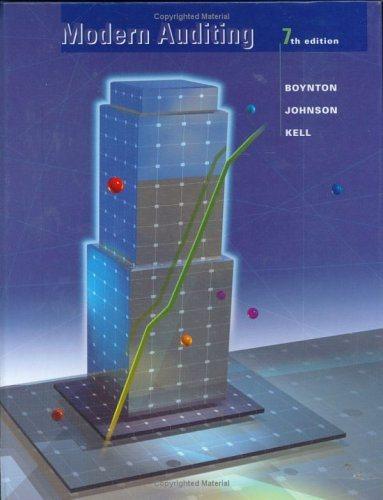Question
LIFO Perpetual Inventory The beginning inventory for Dunne Co. and data on purchases and sales for a three-month period are as follows: Date Transaction Number
-
LIFO Perpetual Inventory
The beginning inventory for Dunne Co. and data on purchases and sales for a three-month period are as follows:
Date Transaction Number of Units Per Unit Total Apr. 3 Inventory 25 $1,200 $30,000 8 Purchase 75 1,240 93,000 11 Sale 40 2,000 80,000 30 Sale 30 2,000 60,000 May 8 Purchase 60 1,260 75,600 10 Sale 50 2,000 100,000 19 Sale 20 2,000 40,000 28 Purchase 80 1,260 100,800 June 5 Sale 40 2,250 90,000 16 Sale 25 2,250 56,250 21 Purchase 35 1,264 44,240 28 Sale 44 2,250 99,000 Required:
1. Record the inventory, purchases, and cost of goods sold data in a perpetual inventory record similar to the one illustrated in Exhibit 4, using the last-in, first-out method. Under LIFO, if units are in inventory at two different costs, enter the units with the HIGHER unit cost first in the Cost of Goods Sold Unit Cost column and LOWER unit cost first in the Inventory Unit Cost column.
Dunne Co. Schedule of Cost of Goods Sold LIFO Method For the Three Months Ended June 30 Purchases Cost of Goods Sold Inventory Date Quantity Unit Cost Total Cost Quantity Unit Cost Total Cost Quantity Unit Cost Total Cost Apr. 3 $ $ Apr. 8 $ $ Apr. 11 $ $ Apr. 30 May 8 May 10 May 19 May 28 June 5 June 16 June 21 June 28 June 30 Balances $ $ 2. Determine the total sales, the total cost of goods sold, and the gross profit from sales for the period.
Total sales $ Total cost of goods sold $ Gross profit $ 3. Determine the ending inventory cost on June 30. $
Feedback
1. When the perpetual inventory system is used, revenue is recorded each time a sale is made along with an entry to record the cost of the goods sold. LIFO means the last units purchased are assumed to be the first to be sold. Therefore after each sale, the remaining or ending inventory is made up of the first or earliest purchases. Think of your inventory in terms of "layers." The first sale comes from the most recent purchase layer. When deciding which layer to use for costing of each sale ask yourself: "Is there enough inventory left in the most recent purchase to cover the sale?" If not, the other units sold should be taken from the second most recent purchase layer, which then contains the most recent costs. Continue this process for each transaction. If you have done this problem correctly, the remaining units making up ending inventory will be costed at the April 3 beginning inventory and the May 28 unit purchase price.
2. Total sales are obtained by taking the number of units sold times their sale prices for all sales and adding these amounts together. The total cost of goods sold can be obtained by adding the LIFO costs in the perpetual inventory record. Sales minus cost of goods sold equals gross profit.
3. The ending inventory is what is left after subtracting the cost of goods sold from the goods available for sale. Multiply the units remaining after the last sale by their corresponding earliest layer cost to determine the LIFO cost of the ending inventory.
Loading item
There was an error loading this item. If this continues to occur, please contact Technical Support.
Check My Work
- Previous
- Next
- 100% Correct
- Partially Correct
- Incorrect
- Needs Instructor Grading
Basic Calculatorclose
0
UseEntBSBSpCEHomCEnd
789+
456-
123*
0.=/
Step by Step Solution
There are 3 Steps involved in it
Step: 1

Get Instant Access to Expert-Tailored Solutions
See step-by-step solutions with expert insights and AI powered tools for academic success
Step: 2

Step: 3

Ace Your Homework with AI
Get the answers you need in no time with our AI-driven, step-by-step assistance
Get Started


